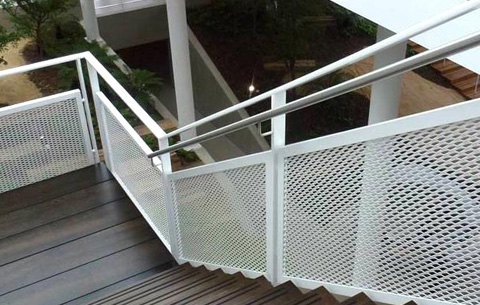The Versatility of Metal Mesh Grating A Comprehensive Overview
Metal mesh grating, a unique and versatile material, has become increasingly popular in various industries due to its strength, durability, and aesthetic appeal. Composed of interconnected metal wires or bars, metal mesh grating provides a wide range of applications, from industrial flooring to architectural designs. This article explores the properties, benefits, and applications of metal mesh grating, highlighting why it is a preferred choice across different sectors.
Composition and Properties
Metal mesh grating is typically made from materials such as stainless steel, aluminum, or carbon steel. The choice of material influences the grating’s strength, weight, and resistance to environmental factors. For instance, stainless steel grating is known for its corrosion resistance, making it ideal for outdoor and marine applications, while aluminum grating offers a lightweight alternative that retains structural integrity under various loads.
The manufacturing process involves welding or weaving metal wires in a grid pattern, which creates an open structure that allows for excellent drainage and ventilation. This feature is particularly valuable in environments where spillages or moisture control are critical, such as in food processing plants or industrial facilities.
Benefits of Metal Mesh Grating
One of the primary advantages of metal mesh grating is its strength-to-weight ratio. Despite its lightweight nature, the material can support heavy loads, making it suitable for use in walkways, platforms, and staircases. The open design minimizes the risk of slips and falls, as debris can easily fall through, reducing the accumulation of hazards.
Additionally, metal mesh grating is relatively low maintenance. Unlike solid surfaces, which may require frequent cleaning and replacement, metal grating can be quickly washed or cleared of debris, ensuring a safe and clean environment. Its durability also means that it will not warp, crack, or degrade easily, preserving its integrity over time.
metal mesh grating

Another significant benefit is its aesthetic flexibility. Metal mesh grating can be finished in various ways, allowing for customization to match different architectural styles. From functional utilitarian grids in industrial settings to elegantly designed grates in public spaces or commercial buildings, the options are endless.
Applications in Various Industries
The application of metal mesh grating spans multiple industries, showcasing its adaptability. In construction and architecture, it is used for walkways, stair treads, and platforms. Its lightweight yet robust nature makes it an excellent choice for elevated structures, contributing to both safety and space-saving designs.
In the industrial sector, metal mesh grating is essential in manufacturing and processing facilities. It is commonly used in areas where chemical spills might occur, as the open design facilitates drainage. Additionally, it is often utilized for safety barriers, allowing employees to see both sides while providing necessary protection.
The food and beverage industry also benefits from metal mesh grating due to its ease of cleaning and resistance to corrosion. It is frequently used in processing areas, walkways, and equipment supports, helping to maintain hygiene standards.
Moreover, metal mesh grating has found its place in the landscaping and architectural elements of buildings. It can be used in decorative facades, railings, and even furniture design, adding an element of modern aesthetics while ensuring functionality.
Conclusion
Metal mesh grating is a remarkable material that effectively combines strength, durability, and design versatility. Its unique properties allow for an array of applications, enhancing both safety and aesthetic appeal in various settings. As industries continue to prioritize efficiency and design, the demand for metal mesh grating is likely to grow, solidifying its status as a go-to material for construction, industrial, and decorative purposes alike. By understanding its composition, benefits, and applications, stakeholders can make informed decisions when selecting materials that meet their project needs.
-
Why Galvanized Trench Cover Steel Grating Resists Corrosion
NewsJul.10,2025
-
The Versatility and Strength of Stainless Expanded Metal Mesh
NewsJul.10,2025
-
Load Calculations in Steel Grating Platforms
NewsJul.10,2025
-
Keeping Pets and Kids Safe with Chicken Wire Deck Railing
NewsJul.10,2025
-
Hole Diameter and Pitch for Round Perforated Metal Sheets
NewsJul.10,2025
-
Aluminium Diamond Mesh in Modern Architecture
NewsJul.10,2025
Subscribe now!
Stay up to date with the latest on Fry Steeland industry news.

